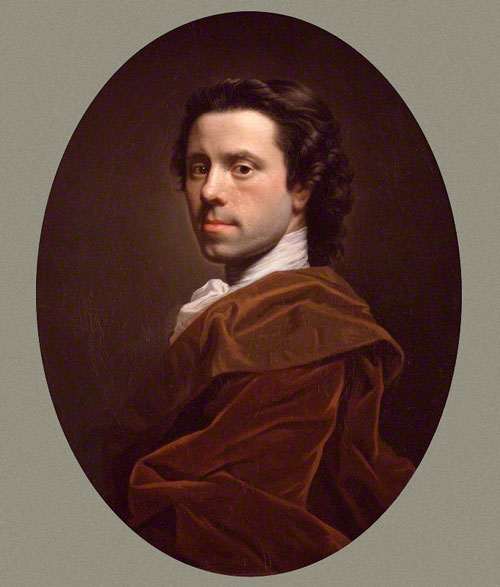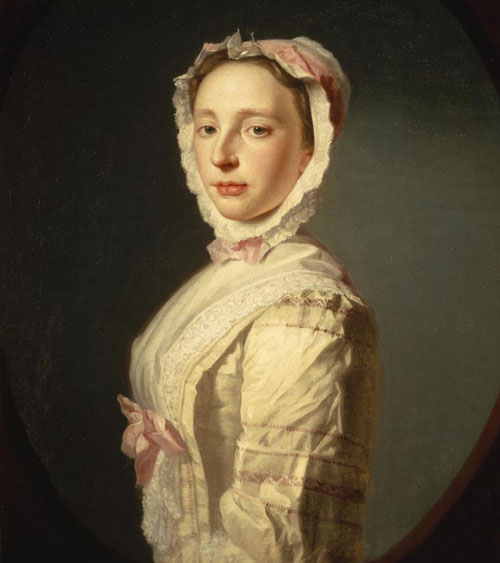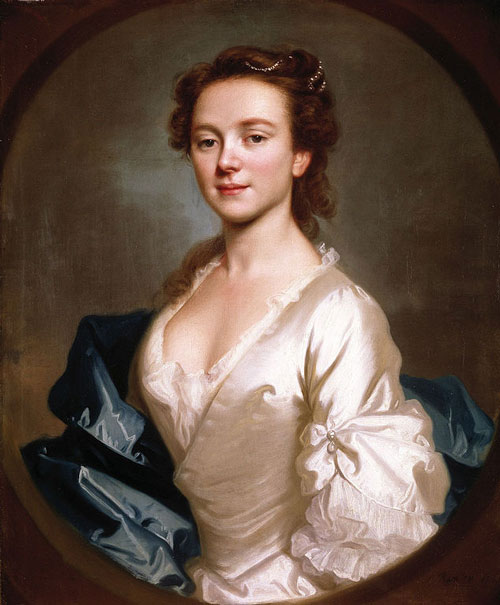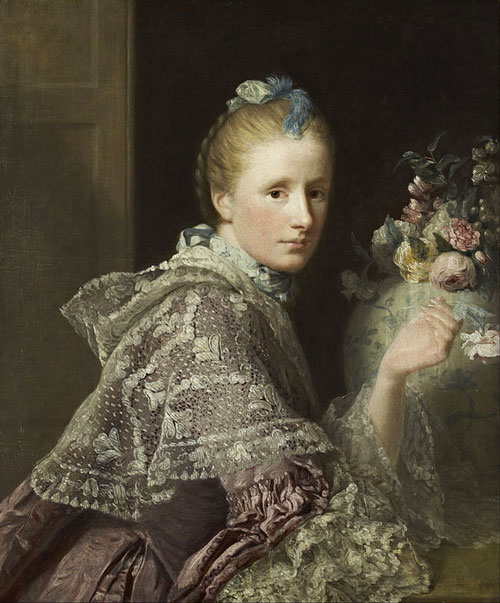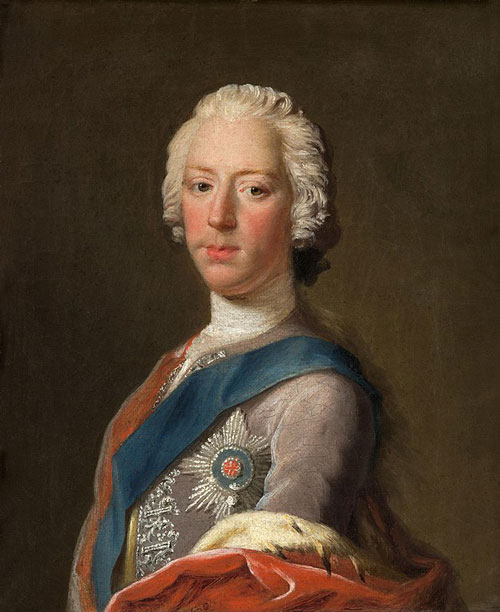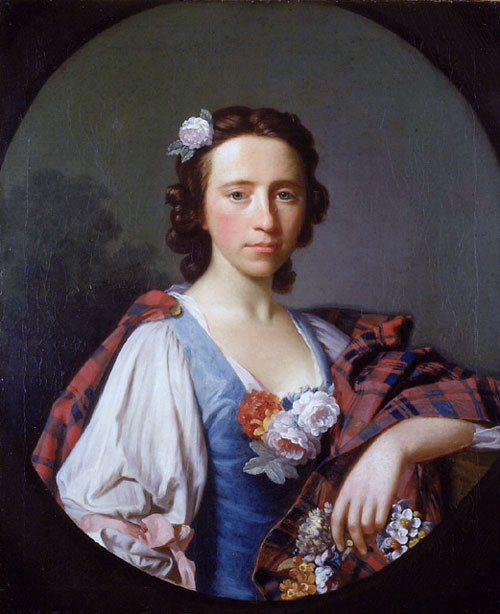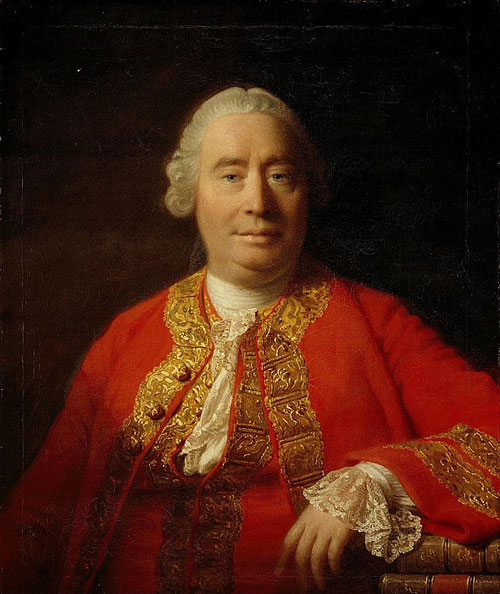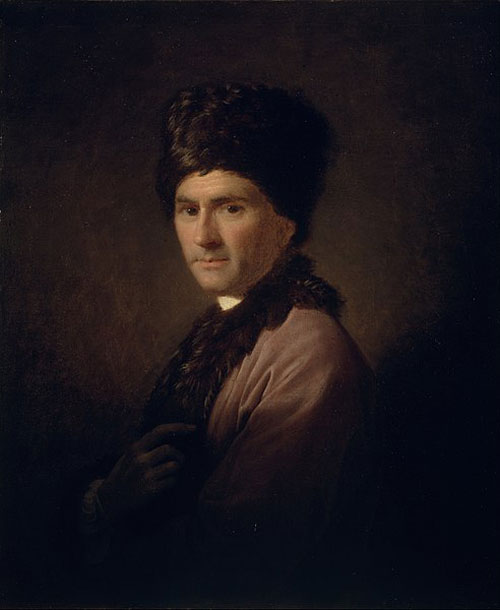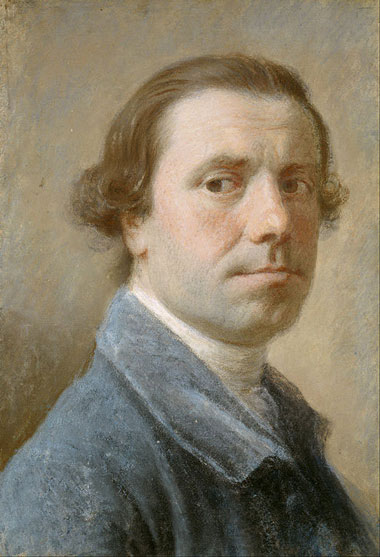The genius of portraiture or the jobbing artist?
Ramsay, it might be said, tended to paint a great number of rather dull society portraits, including numerous nobles, lawyers and military men. It paid the bills. And he employed a team of assistants at times to help fulfil the workload. But some of his most celebrated works that have endured in the popular imagination were inspired by the heart: seen in those tender portraits of his wives for example (pictured above) - or in the perceptive gaze of some of the philosophers and writers of the age. Perhaps the most notable are his famous Romantic figures such as Bonnie Prince Charlie and his unlikely saviour after the battle of Culloden, Flora Macdonald.

Portrait of the Bonnie Prince himself, Charles Edward Stuart from the year of the Jacobite occupation of the Scottish capital, 1745. Charles was about to embark on his invasion of England and there was no time to lose - or, as letter at the time from his valet to the artist declared: “Sir, you are desired to come to the Palace of Holyroodhouse as soon as possible in order to take his Royal Highness’ picture. So I expect you’ll wait no further call. I am, your most humble servant, John Stuart, Holyrood House 26th of October 1745.
Ramsay's incisive and beautiful portrait of Flora Macdonald, 1749.
Legend and fact combine in the tale of Bonnie Prince Charlie and his escape after the battle of Culloden. He was disguised and spirited away to safety on the Isle of Skye and concealed for some months by this brave and resourceful lady at great personal risk to herself. (Ashmolean Museum).
These have become portraits almost as famous as those depicted in them. They appear regularly in history books and documentary footage. Here, for instance, is another familiar visage - the superb portrayal of Scottish Enlightenment philosopher David Hume (1711-76).
Ramsay's outstanding portrait of the philosopher David Hume, 1766. (Scottish National Portrait Gallery). Ramsay counted Hume among his friends and together they were founder members of a distinguished debating society in Edinburgh.
